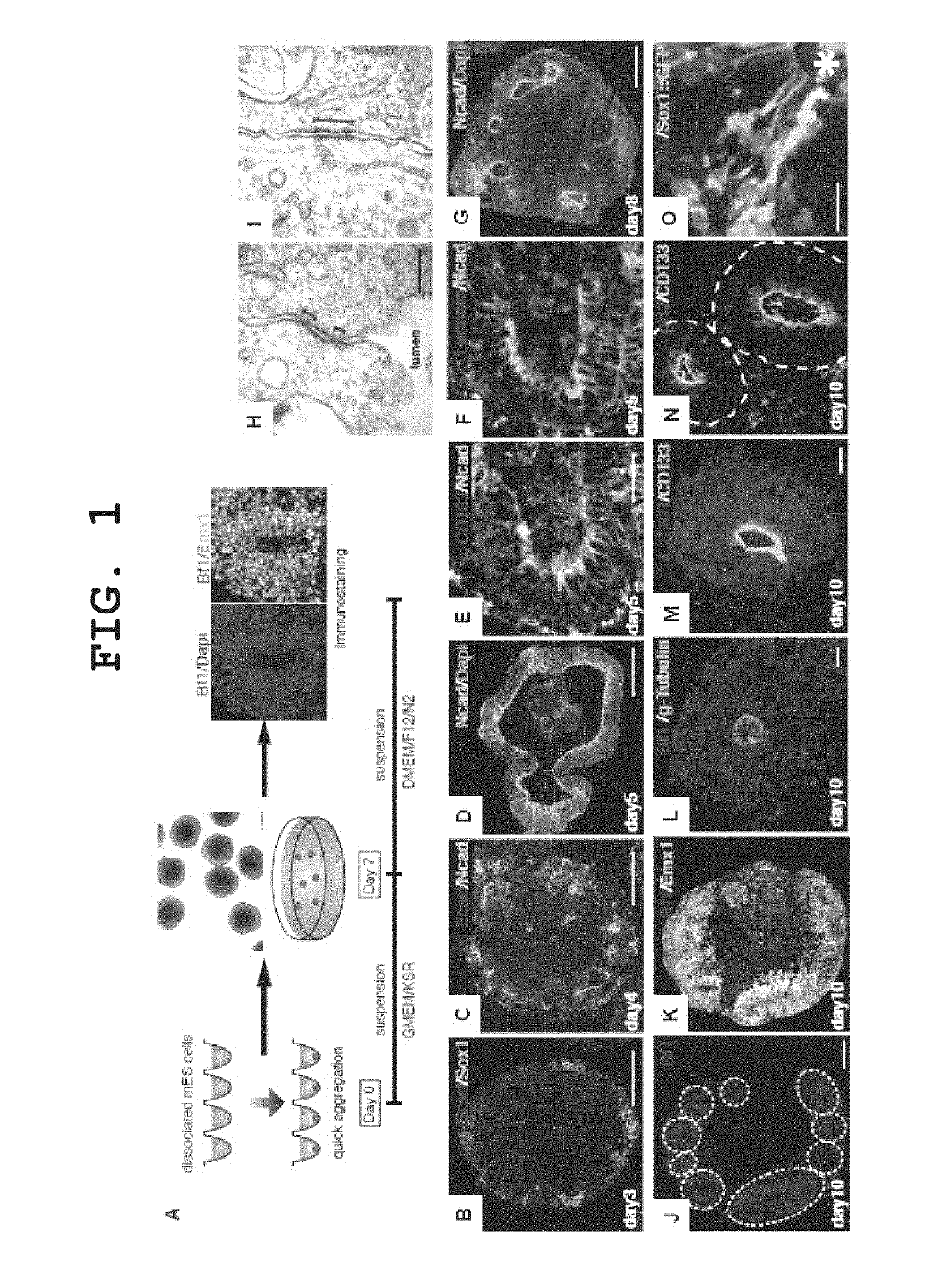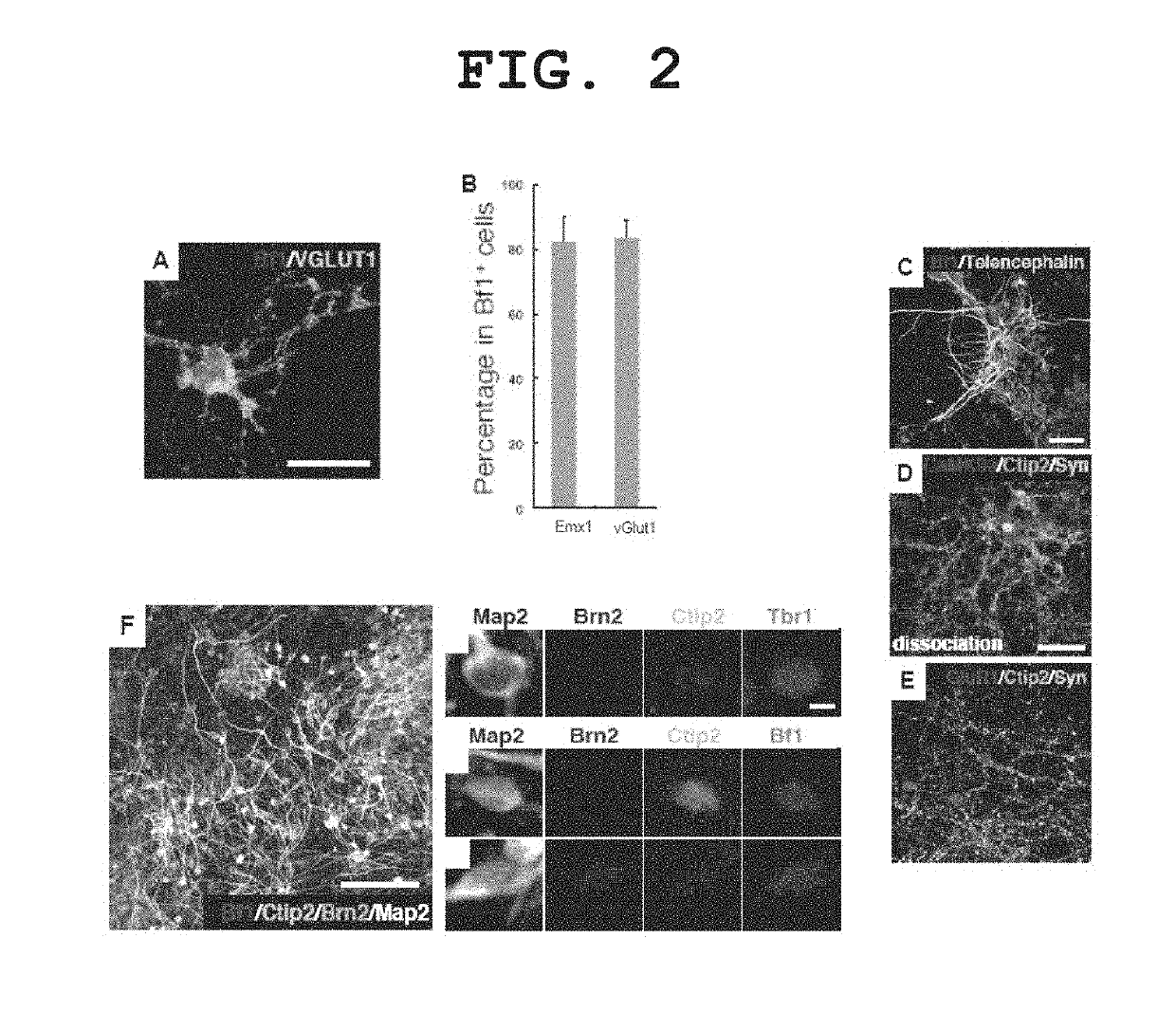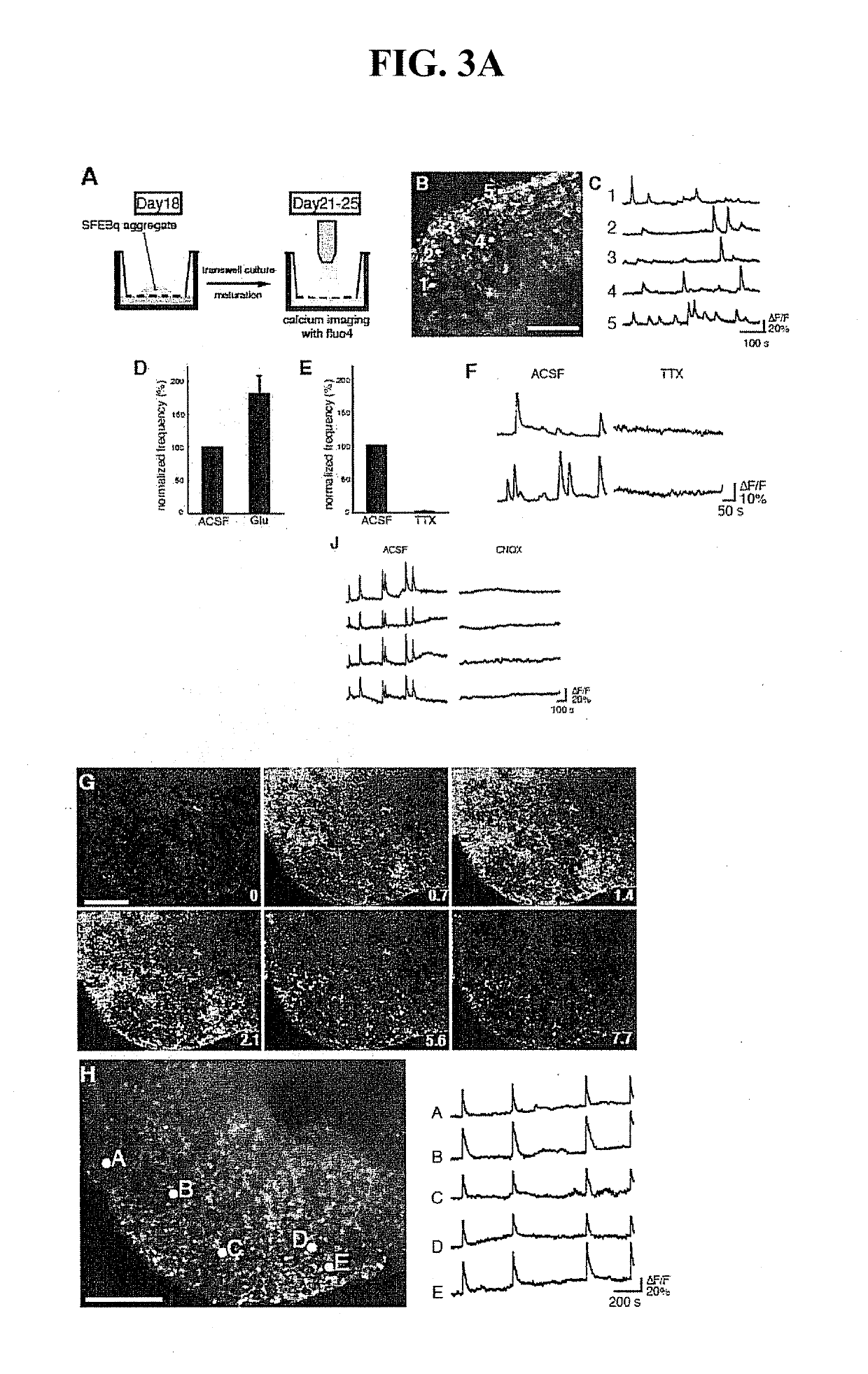Method for culture of stem cell
a stem cell and culture method technology, applied in the field of stem cell culture, can solve the problems of difficult control of selective differentiation from those progenitor cells to particular cerebral cortical neurons, difficult to obtain human cerebral tissue for the sake of these researches, and inability to efficiently induce in vitro differentiation. , to achieve the effect of efficiently induced stem cell differentiation, selectively induced differentiation of layer-specific neurons, and efficient induction of differentiation
- Summary
- Abstract
- Description
- Claims
- Application Information
AI Technical Summary
Benefits of technology
Problems solved by technology
Method used
Image
Examples
example 1
Highly Efficient Differentiation Induction into Cerebral Cortex Progenitor Cells by the SFEBq Method
(Method)
[0257]EB5 cells, which are mouse ES cells (E14-derived), or cells of an E14-derived cell line wherein the Venus gene, which is a modified GFP (green fluorescent protein), has been knocked in the cerebral nerve marker Bf1 gene as a nerve differentiation reporter by homologous recombination (hereinafter described as “Bf1 / Venus-mES cells”), were cultured as described in the literature (Watanabe et al., Nature Neuroscience, 2005), and used in the experiments.
[0258]The medium used was a G-MEM medium (Invitrogen) supplemented with 1% fetal calf serum, 10% KSR (Knockout Serum Replacement; Invitrogen), 2 mM glutamine, 0.1 mM non-essential amino acids, 1 mM pyruvic acid, 0.1 mM 2-mercaptoethanol and 2000 U / ml LIF. For nerve differentiation induction by suspension culture, ES cells were mono-dispersed using 0.25% trypsin-EDTA (Invitrogen), and suspended in 150 μl of the differentiation ...
example 2
In Vitro Production of Cerebral Neurons from Cerebral Cortex Progenitor Cells Induced by the SFEBq Method
(Method)
[0263]Aggregates obtained by continued differentiation culture by the method described in Example 1 for 12 days were enzymatically dispersed (SUMILON Neural Tissue Dissociation kit), plated in a culture plate coated with poly-D-lysine / laminin / fibronectin at 5×104 cells / cm2, and cultured using a DMEM / F12 medium supplemented with 1×N2 supplement and 10 ng / ml of FGF2 for 2 days. Subsequently, the cells were further cultured using a Neurobasal medium supplemented with B27 supplement+50 ng / ml BDNF+50 ng / ml NT3 for 6 days. The properties of the differentiated neurons were analyzed by a fluorescent immunostaining method. The results are shown in FIG. 2.
(Results)
[0264]Most of the cells in the test tube became TuJ1-positive neurons, of which 80% were positive for the cerebral cortex-specific marker Emx1 and positive for the glutamatergic neuron (abundantly present in cerebral cort...
example 4
Integration of Cerebral Neurons Produced by the SFEBq Method in Cerebral Tissue
(Method)
[0270]Bf1 / Venus-mES cells were prepared by a method described in the literature (Nature Biotech., 20, 87-90). After Bf1 / Venus-mES cells were cultured by the method described in Example 1 for 14 days, the resulting Venus-positive cell mass was used for the experiment described below. Cerebral slice tissue from a mouse at 14.5 days of fetal development or 1 day after birth was brought into contact with a Venus-positive cell mass by placing the cell mass in the cerebral ventricle portion (FIG. 4, view A), and co-cultured on a Transwell filter for 3 days.
[0271]The venus-positive cell mass (after 11 days of differentiation culture) in the form of the mass as it is, or after being dispersed, was transplanted to the vicinity of the motor area of the cerebral cortex of a neonatal mouse in vivo, and histologically analyzed 4 weeks after the transplantation. The results are shown in FIG. 4.
(Results)
[0272]In...
PUM
| Property | Measurement | Unit |
|---|---|---|
| time | aaaaa | aaaaa |
| transmission speed | aaaaa | aaaaa |
| time | aaaaa | aaaaa |
Abstract
Description
Claims
Application Information
 Login to View More
Login to View More - R&D
- Intellectual Property
- Life Sciences
- Materials
- Tech Scout
- Unparalleled Data Quality
- Higher Quality Content
- 60% Fewer Hallucinations
Browse by: Latest US Patents, China's latest patents, Technical Efficacy Thesaurus, Application Domain, Technology Topic, Popular Technical Reports.
© 2025 PatSnap. All rights reserved.Legal|Privacy policy|Modern Slavery Act Transparency Statement|Sitemap|About US| Contact US: help@patsnap.com



